Pseudoinonotus dryadeus
Scientific name: Pseudoinonotus dryadeus (Pers.) T.
Wagner &
M. Fisch
Derivation of name: Pseudo- means "false" and inonotus
means "fibrous" (ino-) and "ear-like" (ot-); dryadeus means
"oak" (dryad-) and "belonging or pertaining to" (-eus) in
reference to the primary host of this species.
Synonymy: Inonotus dryadeus (Pers.) Murrill; Polyporus
dryadeus Pers.: Fr.
Common names: Warted oak polypore, weeping polypore
Phylum: Basidiomycota
Order: Hymenochaetales
Family: Hymenochaetaceae
Occurrence on wood substrate: Parasitic, somewhat
saprobic; at the base of living oaks or recent stumps;
September through October, overwinters.
Dimensions: Caps up to 40 cm wide, 23 cm long, and 15
cm thick. Caps may fuse together.
Upper surface: Buff to grayish-brown to yellowish-brown
to reddish-brown to blackish; finely
hairy at first, becoming
glabrous; uneven to warty or bumpy; cracked in age; margin
thick, rounded, same color as cap or sometimes ivory in
color; cap
and margin exuding amber-colored droplets when
young.
Pore surface: Whitish to gray-brown, becoming dark;
exuding amber-colored droplets when young; 4-6 pores per
mm.
Edibility: Inedible.
Comments: Pseudoinonotus dryadeus causes a white rot
of the butt and roots of living oaks.
More information at MushroomExpert.com:
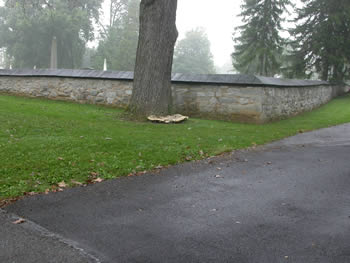
Figure 1. White oak infected by Pseudoinonotus
dryadeus with the
fruiting body appearing at the base
of the tree. The tree was alive when the picture was
taken in September, 2004.
Photo © Gary Emberger.
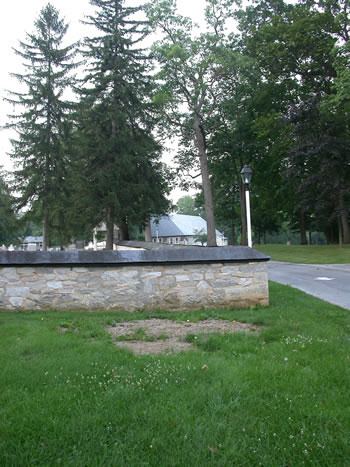
Figure 2. As a result of infection by Pseudoinonotus
dryadeus, the
beautiful mature white oak tree
(Quercus alba) shown in Figure 1 had to be removed
in April of 2006. The tree was not dead but was judged
hazardous to people and property.
Photo © Gary Emberger.
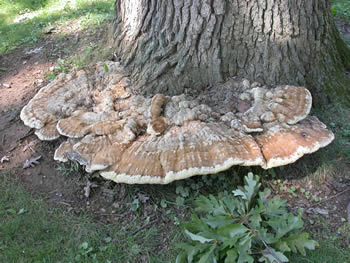
Figure 3. Note the uneven surface and ivory-colored margin.
Fruitbodies may also appear some distance from the trunk
growing from roots of infected trees. Photo © Gary
Emberger.
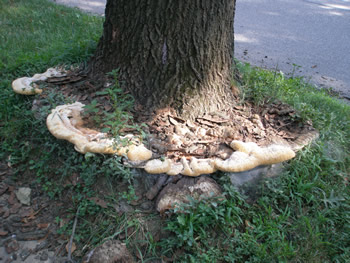
Figure 4. Pseudoinonotus dryadeus completely surrounds
this dead oak tree. Photo © John Dawson.
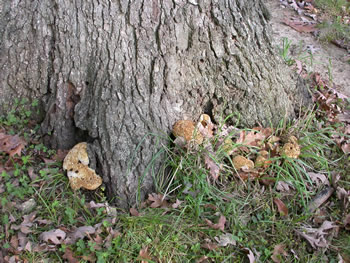
Figure 5. Immature fruit bodies at the base of an oak tree.
Photo © Gary Emberger.
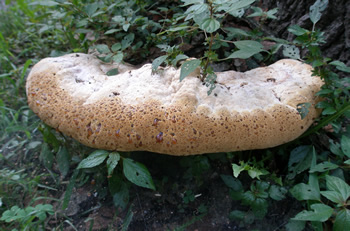
Figure 6. The growing margin of Pseudoinonotus
dryadeus is often spotted and
may exude droplets of
liquid.
Photo © John Dawson.
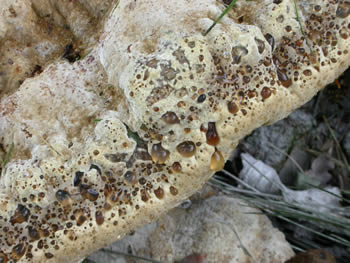
Figure 7. Amber-colored droplets of liquid exuding from
the young, growing margin. Photo © Gary Emberger.
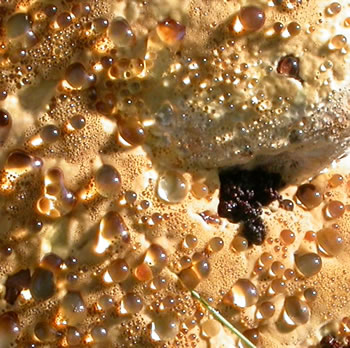
Figure
8. Caught in the sun's rays, the marginal droplets
of Pseudoinonotus dryadeus are quite striking.
Photo © Gary Emberger.
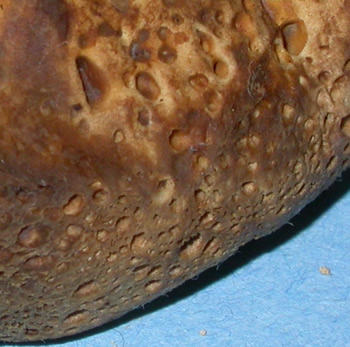
Figure 9.
Older marginal areas of Pseudoinonotus
dryadeus, no longer with
droplets, are pock-marked
like the surface of the moon.
Photo © Gary Emberger.
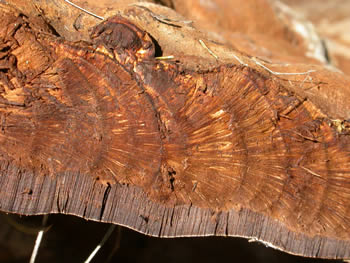
Figure 10. This section through the cap reveals the rust
brown context, streaked with differently colored tissues.
At the bottom is the layer of tubes.
Photo © Gary Emberger.
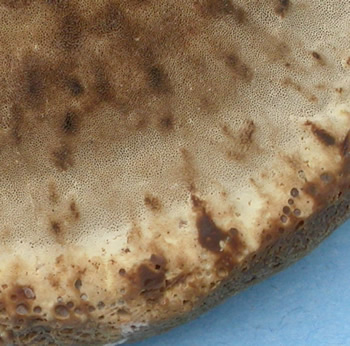
Figure 11.
Pore surface of Pseudoinonotus dryadeus.
Photo © Gary Emberger.